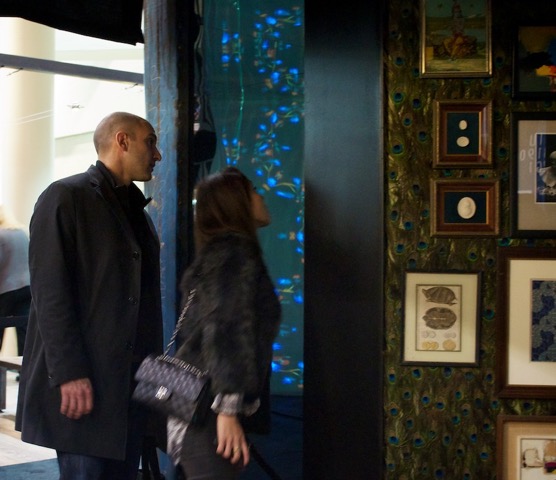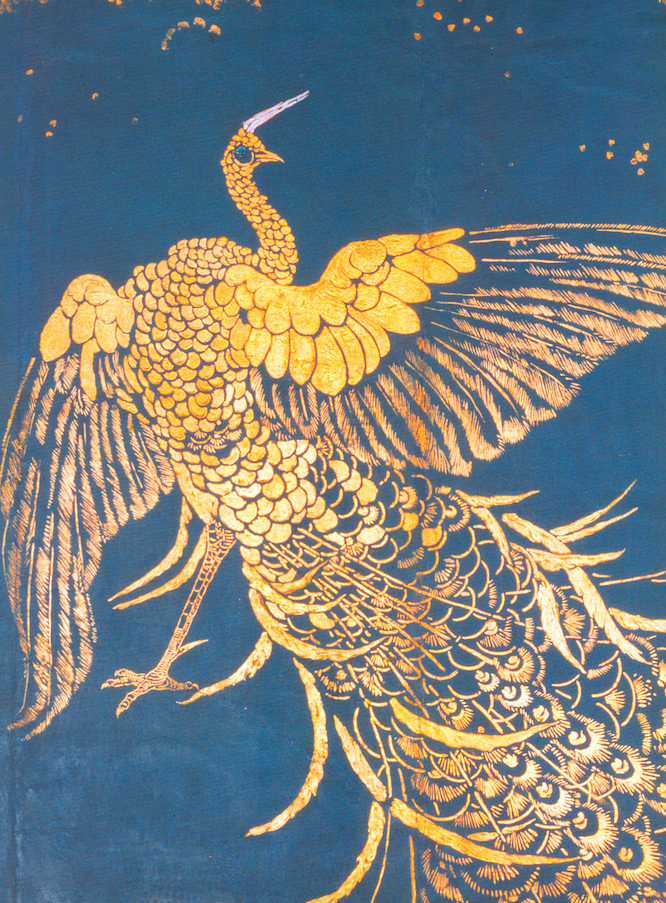June 3, 2016
As an Interior Designer, I am often inspired by things in nature, by things that I see traveling, and sometimes by things I see unexpectedly. I draw inspiration not only from what I see before me, but also from the collection of images that make their way into my unconscious mind. For me, the peacock feathers, through their beauty, their colours and their ephemeral nature, have been a significant point of inspiration for me. I used them in multiple ways in the Casey Design Group’s Designer Space "Dream Archive" exhibit at Interior Design Show a few years ago and also glued them on one wall of the foyer of my own home! This blog entry illustrates how I used these gorgeous feathers as a point of inspiration for these two projects.
The Dream Archive was an exploration of how we, as designers and artists, draw on the unconscious for inspiration and renewal. The peacock was used as an anchoring concept because the peacock loses its feathers and regrows them every year, mirroring the notion that the unconscious is constantly being renewed and restored by one's artistic practice.
The Dream Archive shipping container space was transformed into an environment that illustrates, though metaphor, how designers and artists find inspiration. The Dream Archive was proposed as “a portal that directs us inwards on a sensuous journey of exploration and discovery, revealing the vast transformative powers of our imagination. It is a fictional space that acts as a metaphor for the design process itself.” The Dream Archive shows how the creative mind needs to access both worlds – the real and the imaginary – for essential sources of inspiration and problem solving.
In her blog, “Feathered Foyer,” colleague and extraordinary artist Kari Serrao writes, “In Hinduism the Peacock is associated with Lakshmi who is a deity representing benevolence, patience, kindness, compassion and good luck. In Asian culture it is considered an emblem of love, compassionate watchfulness, good-will, nurturing, and kind-heartedness. In Christianity the Peacock represents rebirth and renewal. With all these wonderful symbolic attributes who wouldn't want these beautiful feathers adorning their walls, watching over those who dwell within?”
Take a look at this beautiful gold mural on indigo blue panels, featured in Kari's blog. Click the link below to see her blog: http://www.kariserrao.com/blog/feathered-foyer2452015.
These are detail shots of the shutters in the Peacock Room, 1876-77 by James McNeill Whistler. I love the combinations of the pattern and colour!
Left: Detail of the northwest corner of the Peacock Room. The use of Chinese porcelain shows Whistler's early fascination with the art of China and Japan. Right: Detail of the mural on south wall of the Peacock Room. The gold breast-feather design shimmers on the solid blue wall and was designed to recall the gilded decoration on Japanese lacquerware.
A notable nineteenth century interior space in an American Museum, “Harmony in Blue and Gold: The Peacock Room,” 1876-77 by James McNeill Whistler, also uses peacock feathers as a recurring theme. Permanently on display at the Freer Gallery of Art, Smithsonian Institution, Washington, DC, Whistler's room uses a striking combination of coppery gold, blues and greens to, "vividly recall the iridescence of peacock feathers." (The Peacock Room, A Cultural Biography by Linda Merrill.)
"I was so inspired by the texture and colour of the peacock feathers that I used them for the front foyer of my home. The walls at first glance look like wallpaper, but are in fact real feathers, carefully layered on the wall. The peacock feathers added the drama and richness I wanted for the visitor upon entering the foyer."
I continually seek design inspiration in everyday objects, history, architecture and art. Keep a look out for upcoming blogs on other great sources of inspiration for design, art and architecture and life.
For more information on our Dream Archive Project, please visit the Accolades page on our website!










